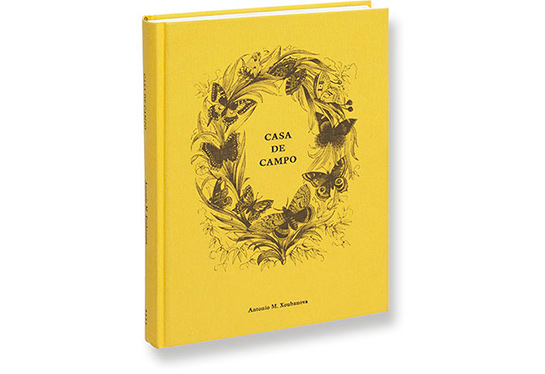Review: Casa de Campo by Antonio M. Xoubanova

It’s easy to forget this, but ours is a world of fairy and folk tales. We are surrounded by mysterious creatures and habits, some dating back thousands of years, others maybe ten or twenty. Christianity itself, for example, has adopted a great many of them. Easter, for example, is celebrated by colouring hard-boiled eggs, there is a bunny involved (does it lay the eggs? I was never able to figure that one out), and the Saviour has risen - not necessarily in that order, but you get the idea. That’s two out of three strange fairy/folk right there.
When you think about it, fairy and folk tales are a lot of fun, as weird or occasionally scary they can be. As a matter of fact, you can look for them provided you keep your eyes (and mind) open. These tales aren’t even necessarily too culture specific, even though, of course, there are some differences between, let’s say, European folk tales and Japanese ones (needless to say, there is a large variety even inside Europe).
But then again, the Japanese kappa, for example, a creature that lives in a pond and causes all kinds of mischief, has its European equivalents; and we have Kermit, the frog. You might point out that that’s not quite the same thing, and that’s true, but only if you insist that folk tales have to be very old. They don’t need to be, though (I owe this insight to Daido Moriyama’s essay in Tales of Tono - c.f. my review).
Antonio Xoubanova’s Casa de Campo brings these ideas to a large public park at the perimeter of Madrid, Spain’s capital. Maybe it would be more accurate to say that the artist photographically extracts traces of fairy and folk tales from the park and the various characters found inside, to re-tell stories of love and death and being lost in the world. Photography, after all, deals with what is in front of the camera, but it is being made with what is behind the camera. It thus not necessarily deals with what is in the world, but rather what we see in the world, based on what is inside us, for whatever reason.
According to the publisher’s website, Casa de Campo “is made up of five chapters referring respectively to love, death, fleeting moments, symbols and a lack of direction.” I wish they hadn’t given this away. But anyway, there truly are five chapters, each one introduced by a small circular image (plus a chapter number). Just like many other books by the same publisher, this one employs images of different sizes, moving around the pages, and for the most part this game works very well (slightly less might have been a little more). Each chapter contains a mix of landscapes, portraits, and other photographs - you don’t quite know what to expect, but the surprises are never jarring.
Here then are folk tales told with images, with contemporary images. Photography has come a long way since the dreaminess of 19th century pictures made around fairy or folk tales; one might want to note that the somewhat harsher and less nostalgic look of these images re-introduces that same feel known from pagan folk traditions that are less romantic and often have jarring edges.
Recommended.
Casa de Campo; photographs by Antonio M. Xoubanova; text by Luis López Navarro; 144 pages; Mack; 2013